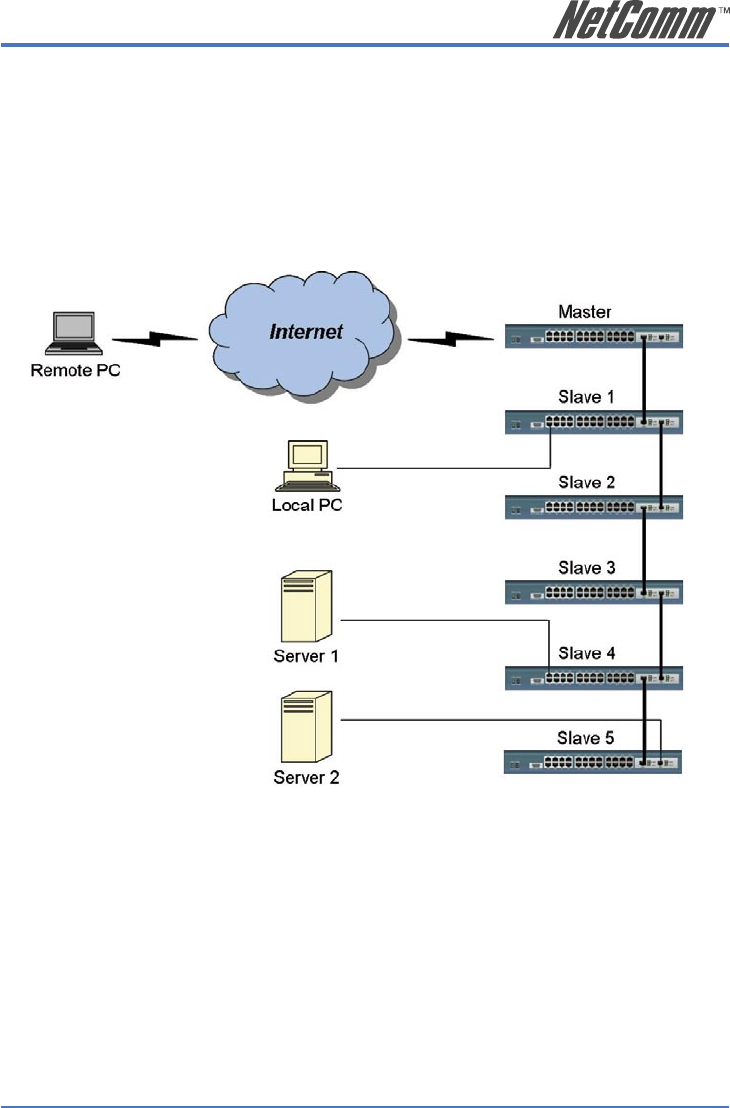
NP2624M User Guide 117
YML827 Rev1
5.4. “Single IP - Stacking mode” application used with switch
This switch provides traditional stacking mode to stack a maximum of 16 switches by cascading
their Gigabit ports. This feature helps network administrators use one switch assigned as the master
to manage the other stacked switches through the browser. That is, the master can bring a “global
view” showing all stacked devices to network administrator as long as he/she has access to the
master switch by using its IP (this IP should be public for remote access through the internet). This
will easily let the network administrator know the group settings (e.g. tag-based VLAN groups)
and link status among all stacked units. A typical arrangement of network connection of “Single IP
– Stacking mode” is shown below:
Typical connections for switch management by stacking
The significant characteristics of this switch are:
1. No redundant hardware required:
Unlike special requirement of connecting cable among “hardware stacking” switches,
this switch provides the least demand as a Gigabit module to build up a stacking
set. The Gigabit module give the best performance for inter-communication between
stacking switches and the administrator can spare one port of Gigabit module in the top
switch or the bottom one in the stack for flexible usage.
2. Well integrated UI to view status of stacking switches:
An user-friendly Web UI provides the user a total view of the port link status and VLAN
group settings for all stacked switches at a glance.


















